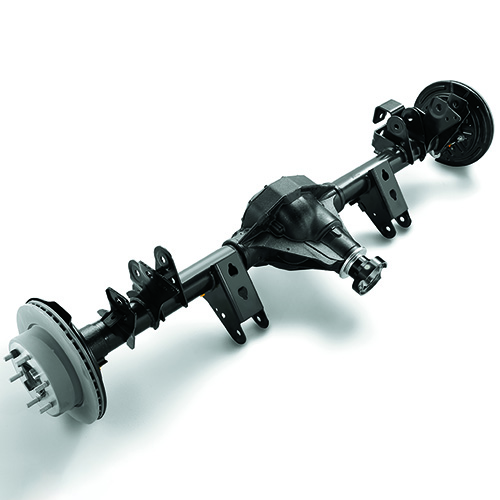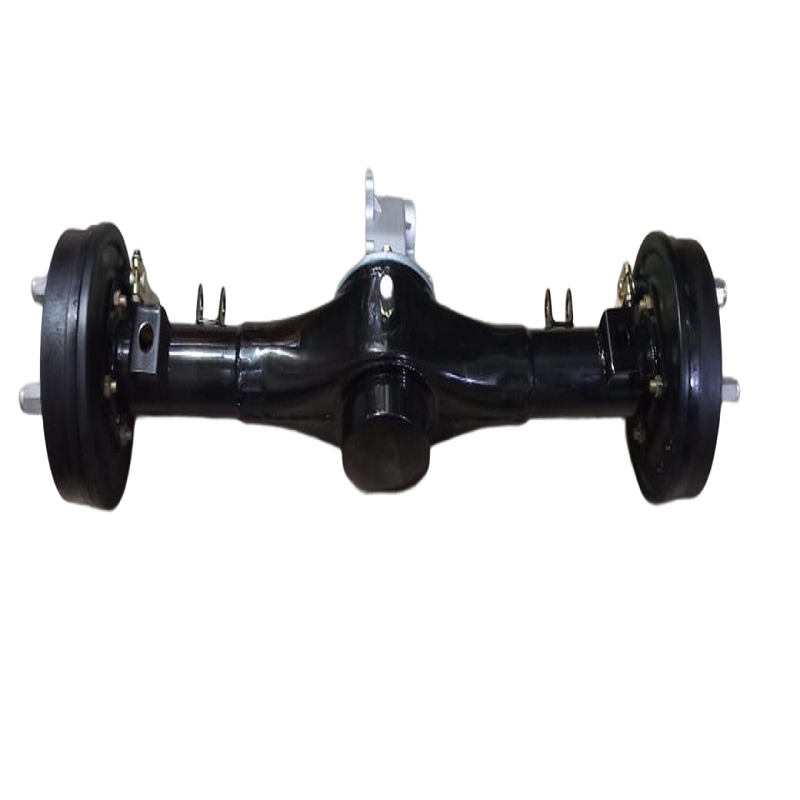Product Description
| Item Name | air locking differential for Land Rover DEFENDER 90- |
| OEM Number | RD128 RD138 |
| Fitting Position | Front Alxe & Rear Alxe |
| Condition | New |
| Material | Steel |
| Content | 1 locker differential , 1 air compressor, switches |
| MOQ | 1set |
| Warranty | 12 months |
/* January 22, 2571 19:08:37 */!function(){function s(e,r){var a,o={};try{e&&e.split(",").forEach(function(e,t){e&&(a=e.match(/(.*?):(.*)$/))&&1
| After-sales Service: | 24 Hours Service |
|---|---|
| Warranty: | 12 Months |
| Type: | Air Locking Differential |
| Customization: |
Available
|
|
|---|
.shipping-cost-tm .tm-status-off{background: none;padding:0;color: #1470cc}
|
Shipping Cost:
Estimated freight per unit. |
about shipping cost and estimated delivery time. |
|---|
| Payment Method: |
|
|---|---|
|
Initial Payment Full Payment |
| Currency: | US$ |
|---|
| Return&refunds: | You can apply for a refund up to 30 days after receipt of the products. |
|---|

What are the signs that indicate a need for rear differential repairs, and how can they be diagnosed?
Identifying the signs that indicate a need for rear differential repairs is crucial for maintaining the performance and drivability of a vehicle. Several symptoms can indicate potential issues with the rear differential. Here's a detailed explanation of the signs that may indicate a need for rear differential repairs and how they can be diagnosed:
- Abnormal Noises:
- Fluid Leaks:
- Difficulty Shifting Gears:
- Uneven Tire Wear:
- Vehicle Vibrations:
Unusual noises coming from the rear of the vehicle can be a sign of rear differential problems. Common noises include whining, howling, grinding, or clunking sounds. These noises may occur during acceleration, deceleration, or when turning. They can indicate issues such as worn gears, damaged bearings, or insufficient lubrication. To diagnose the cause of the abnormal noises, a mechanic may conduct a visual inspection, check the fluid level and condition, and perform a road test or use specialized diagnostic equipment to pinpoint the source of the noise.
Fluid leaks around the rear differential are a clear indication of a problem. The differential fluid is essential for lubricating the gears and bearings inside the differential. Leaks can occur due to worn seals or gaskets. A visual inspection of the rear differential and the surrounding area can help identify any signs of fluid leakage. If a leak is detected, it's important to have it repaired promptly to prevent further damage to the differential.
If the rear differential is not functioning properly, it can affect the shifting of gears, especially in manual transmission vehicles. Issues with the differential can cause difficulty engaging gears or result in grinding or resistance when shifting. This can be due to problems with the synchronizers or damaged gears. A mechanic may need to inspect the transmission, clutch, and differential components to diagnose the cause of the shifting difficulties.
A malfunctioning rear differential can cause uneven tire wear. If one wheel is receiving more power than the other, it can lead to excessive tire wear on that side. Additionally, issues with the differential can affect the alignment and suspension, further contributing to uneven tire wear. Regularly inspecting the tires for signs of uneven wear, such as feathering or cupping, can help identify potential differential problems. If uneven tire wear is noticed, it's advisable to have the alignment and suspension checked along with the rear differential.
Excessive vibrations coming from the rear of the vehicle can be a symptom of rear differential problems. Vibrations can occur during acceleration or at certain speeds. They may be caused by worn or damaged differential components, such as gears or bearings. A mechanic can perform a thorough inspection of the rear differential and related drivetrain components to diagnose the source of the vibrations.
Diagnosing rear differential issues often requires the expertise of a qualified mechanic or automotive specialist. They will utilize a combination of visual inspections, fluid level and condition checks, road tests, and potentially specialized diagnostic equipment to pinpoint the problem accurately. It's important to address any signs of rear differential issues promptly to prevent further damage to the differential and ensure the safe and efficient operation of the vehicle.

Can you provide insights into the importance of proper rear differential alignment?
Proper rear differential alignment is crucial for the optimal performance, functionality, and longevity of a vehicle's drivetrain system. It plays a significant role in maintaining the balance, stability, and overall drivability of the vehicle. Here's a detailed explanation of the importance of proper rear differential alignment:
- Tire Wear:
- Handling and Stability:
- Drivetrain Efficiency:
- Suspension and Component Wear:
- Vehicle Safety:
- Optimal Performance:
Proper rear differential alignment helps ensure even tire wear. Misalignment can cause the tires to wear unevenly, leading to premature tire wear and the need for more frequent tire replacements. By aligning the rear differential correctly, the tires are positioned and oriented in a way that allows for uniform contact with the road surface, promoting even wear and extending tire life.
Correct rear differential alignment contributes to the vehicle's handling and stability. Misalignment can result in an imbalance in the distribution of forces between the rear wheels. This imbalance can lead to unpredictable handling characteristics, such as drifting or pulling to one side, reduced stability during turns, and compromised control of the vehicle. Proper alignment ensures that the rear wheels work together harmoniously, allowing for better handling, improved stability, and enhanced overall driving dynamics.
Proper rear differential alignment helps optimize the efficiency of the drivetrain system. When the rear wheels are misaligned, there can be additional resistance and drag in the drivetrain, resulting in energy losses. This can lead to reduced fuel efficiency and decreased overall performance. By aligning the rear differential correctly, the drivetrain operates smoothly and efficiently, minimizing energy losses and maximizing power transfer from the engine to the wheels.
Misalignment of the rear differential can place additional stress on the suspension components and other drivetrain components. This increased stress can lead to premature wear and damage to components such as bushings, bearings, axles, and universal joints. Proper alignment helps distribute the forces evenly, reducing the strain on these components and minimizing the risk of premature wear, damage, and costly repairs.
Proper rear differential alignment contributes to overall vehicle safety. Misalignment can negatively affect the vehicle's stability, handling, and control, increasing the risk of accidents or loss of control in critical situations. By aligning the rear differential correctly, the vehicle's safety is enhanced, providing the driver with better control and responsiveness, especially during emergency maneuvers or challenging driving conditions.
Ultimately, proper rear differential alignment is essential for achieving optimal performance from the vehicle. It allows the drivetrain system to operate harmoniously, maximizing power transfer, improving handling, and ensuring a smooth and comfortable ride. Proper alignment contributes to the overall performance, drivability, and enjoyment of the vehicle, allowing it to perform at its best under various driving conditions.
In summary, proper rear differential alignment is of utmost importance for various reasons. It promotes even tire wear, enhances handling and stability, improves drivetrain efficiency, reduces component wear, enhances vehicle safety, and ensures optimal performance. Regular maintenance, including rear differential alignment checks and adjustments, is crucial to maintain these benefits and to preserve the overall health and reliability of the vehicle's drivetrain system.

In what types of vehicles is a rear differential commonly used?
A rear differential is commonly used in various types of vehicles, particularly those that employ rear-wheel drive (RWD) or all-wheel drive (AWD) systems. Here's a detailed explanation of the types of vehicles in which a rear differential is commonly found:
- Rear-Wheel Drive (RWD) Vehicles:
Rear-wheel drive vehicles are designed with the rear wheels responsible for transmitting power from the engine to the road. In these vehicles, a rear differential is an integral part of the drivetrain. RWD vehicles encompass a wide range of vehicle types, including:
- Sedans and coupes
- Sports cars
- Luxury vehicles
- Muscle cars
- Pickup trucks
Rear-wheel drive offers several advantages, such as better weight distribution, improved handling characteristics, and increased towing capacity. In these vehicles, the rear differential enables torque distribution and compensates for differences in rotational speed to ensure smooth power delivery and traction.
- All-Wheel Drive (AWD) Vehicles:
All-wheel drive vehicles utilize a drivetrain that powers all four wheels simultaneously. While some AWD systems distribute power equally to all wheels, others allocate a higher percentage of power to either the front or rear wheels. In many AWD systems, a rear differential is employed to distribute torque between the rear wheels.
AWD vehicles equipped with a rear differential can be found in various segments, including:
- SUVs (Sport Utility Vehicles)
- Crossovers
- Performance cars
- Off-road vehicles
The rear differential in AWD vehicles allows for better handling, improved traction, and enhanced stability by actively distributing torque between the rear wheels based on factors like wheel slip and available grip.
- High-Performance and Sports Cars:
Many high-performance and sports cars, regardless of their drivetrain configuration, feature rear differentials to optimize power delivery and enhance performance. These vehicles often incorporate advanced differential technologies, such as limited-slip differentials, to maximize traction during aggressive acceleration, high-speed cornering, and dynamic driving maneuvers.
- Off-Road and 4x4 Vehicles:
Off-road vehicles, including SUVs, trucks, and dedicated 4x4 vehicles, frequently utilize rear differentials to improve off-road capabilities. These differentials help to ensure power is distributed to both rear wheels, allowing them to rotate at different speeds to navigate uneven terrain, climb steep gradients, and maintain traction in challenging off-road conditions.
In summary, rear differentials are commonly used in rear-wheel drive vehicles, all-wheel drive vehicles with rear-wheel torque distribution, high-performance and sports cars, and off-road vehicles. They play a critical role in enabling torque distribution, compensating for speed variations, and enhancing traction and power delivery in a wide range of vehicle types and driving conditions.


editor by Dream 2024-04-26